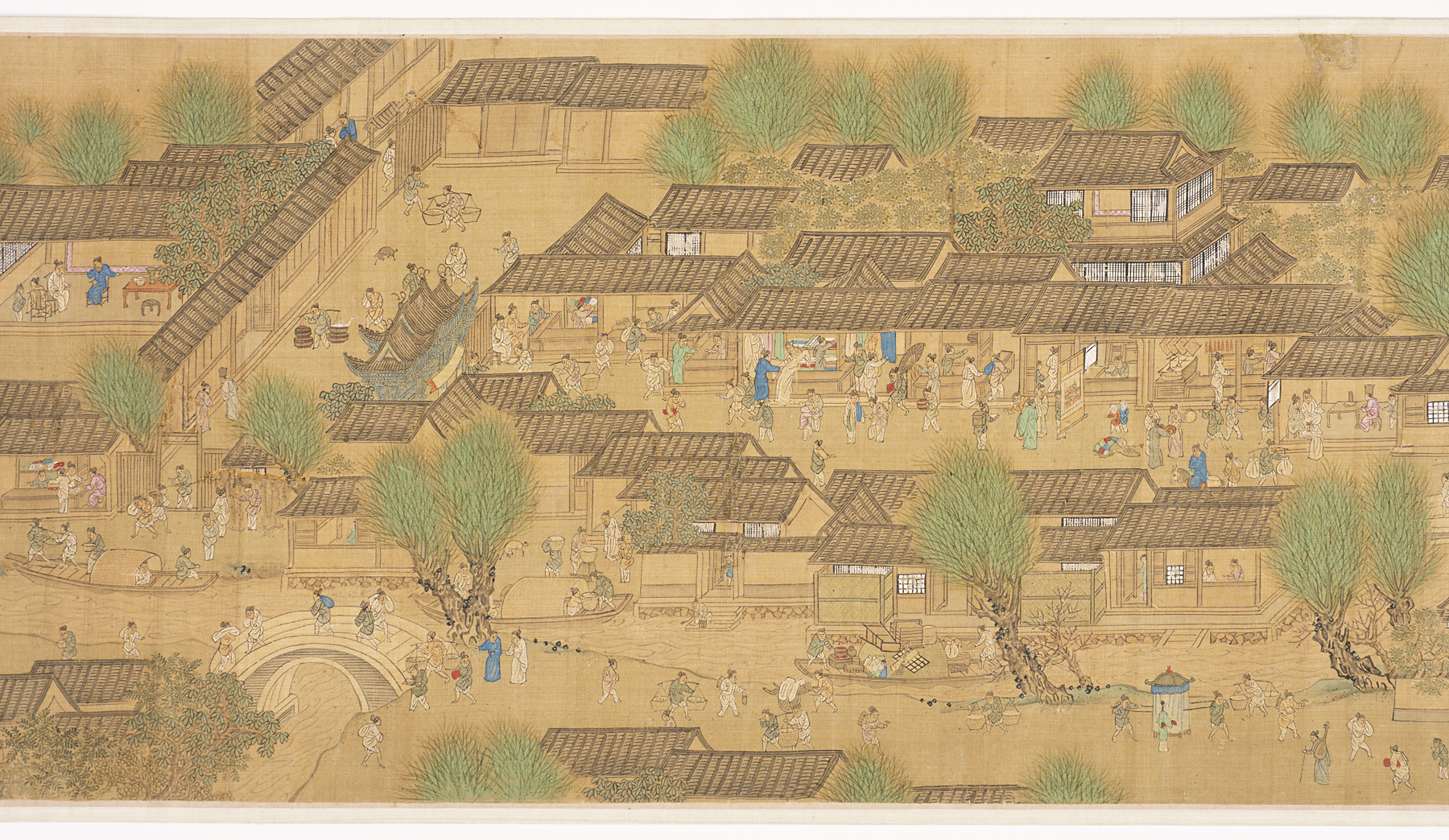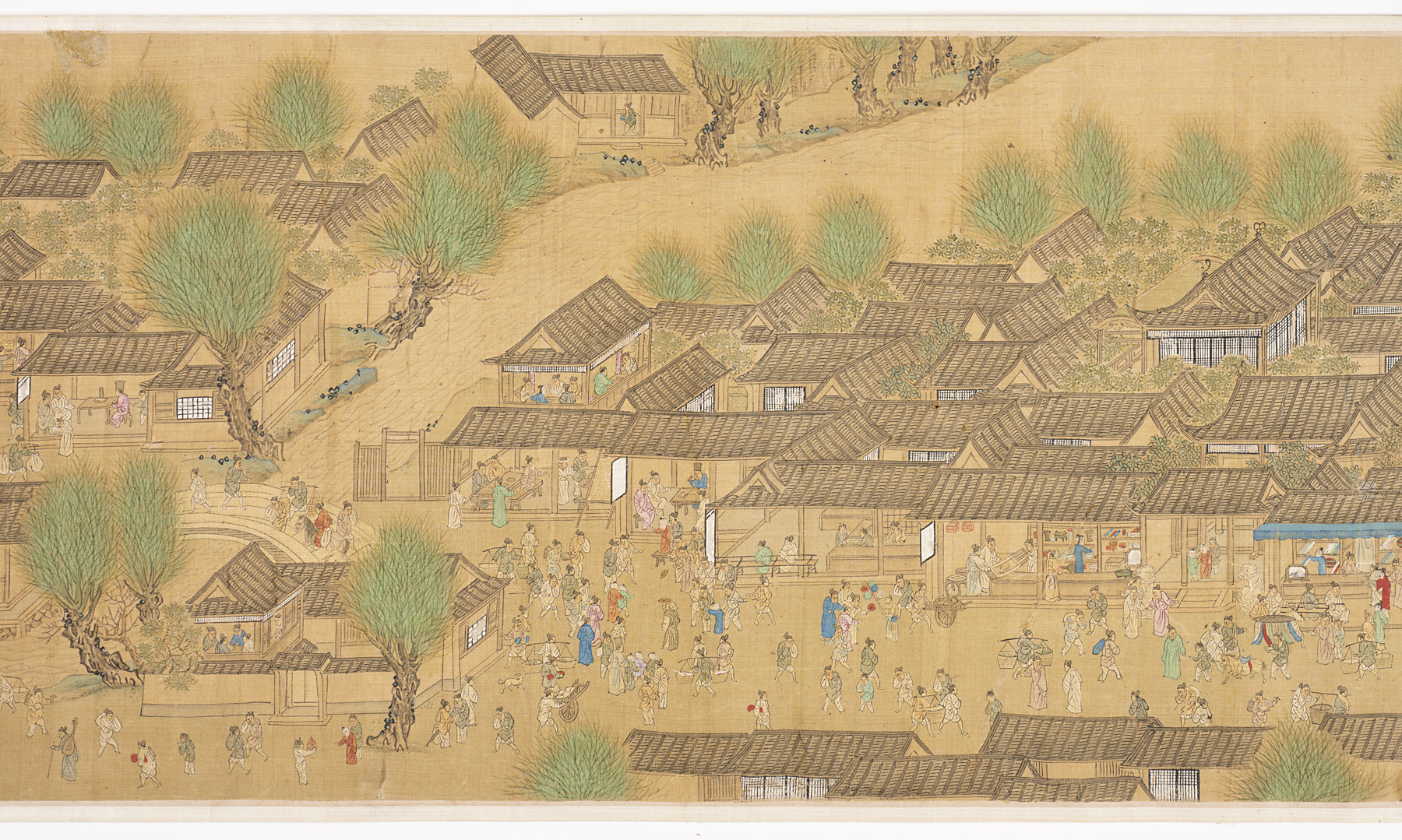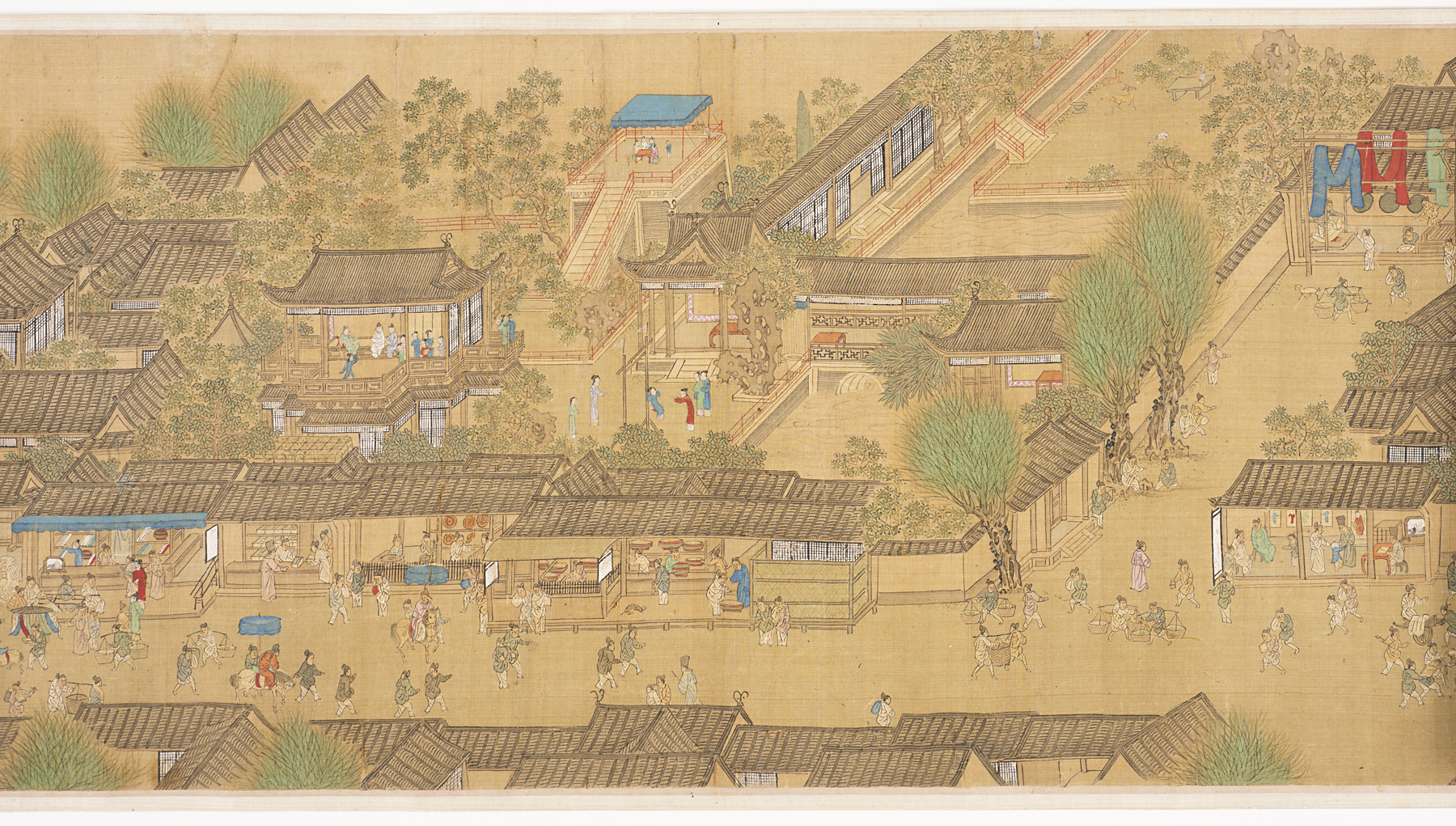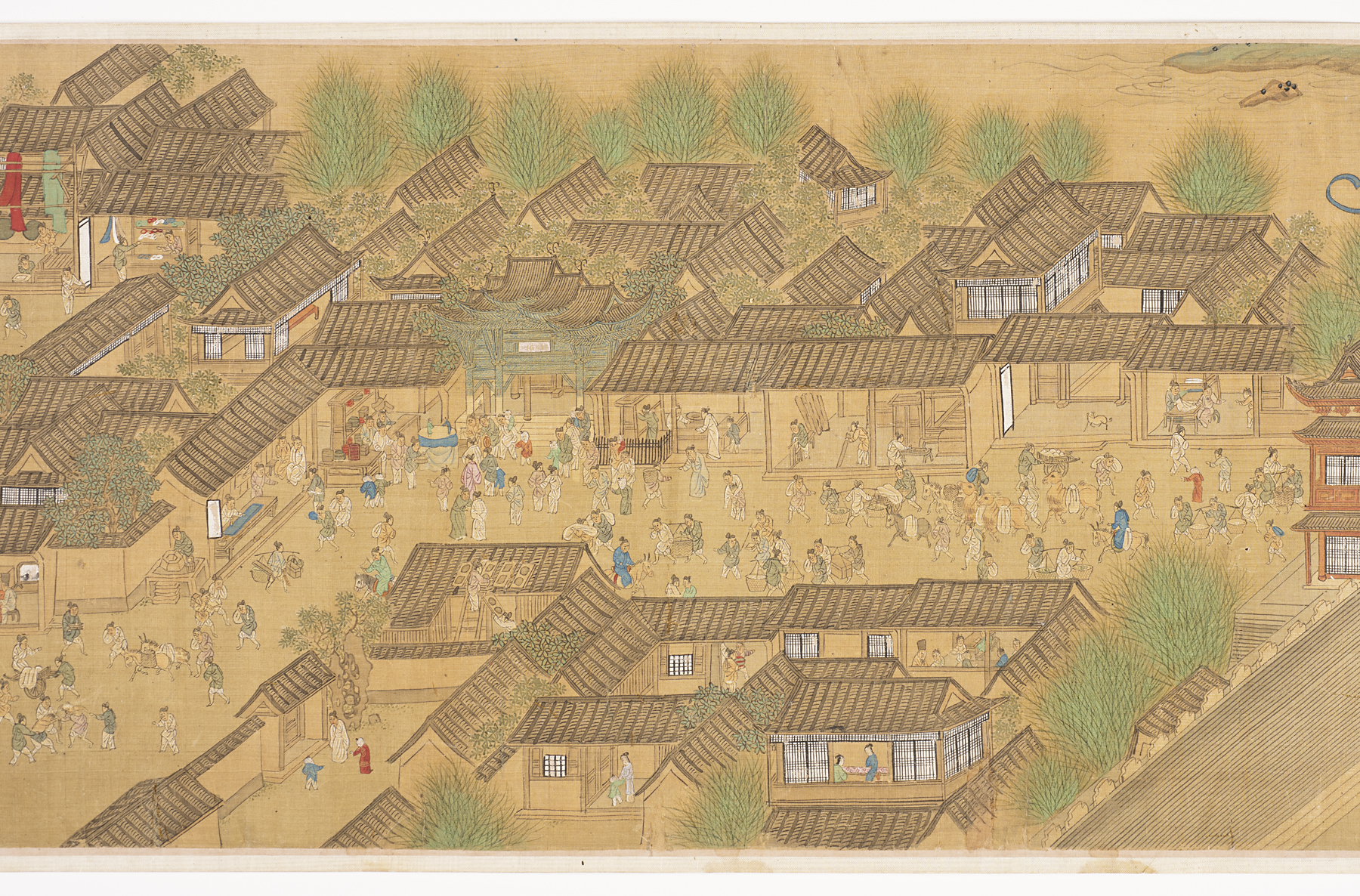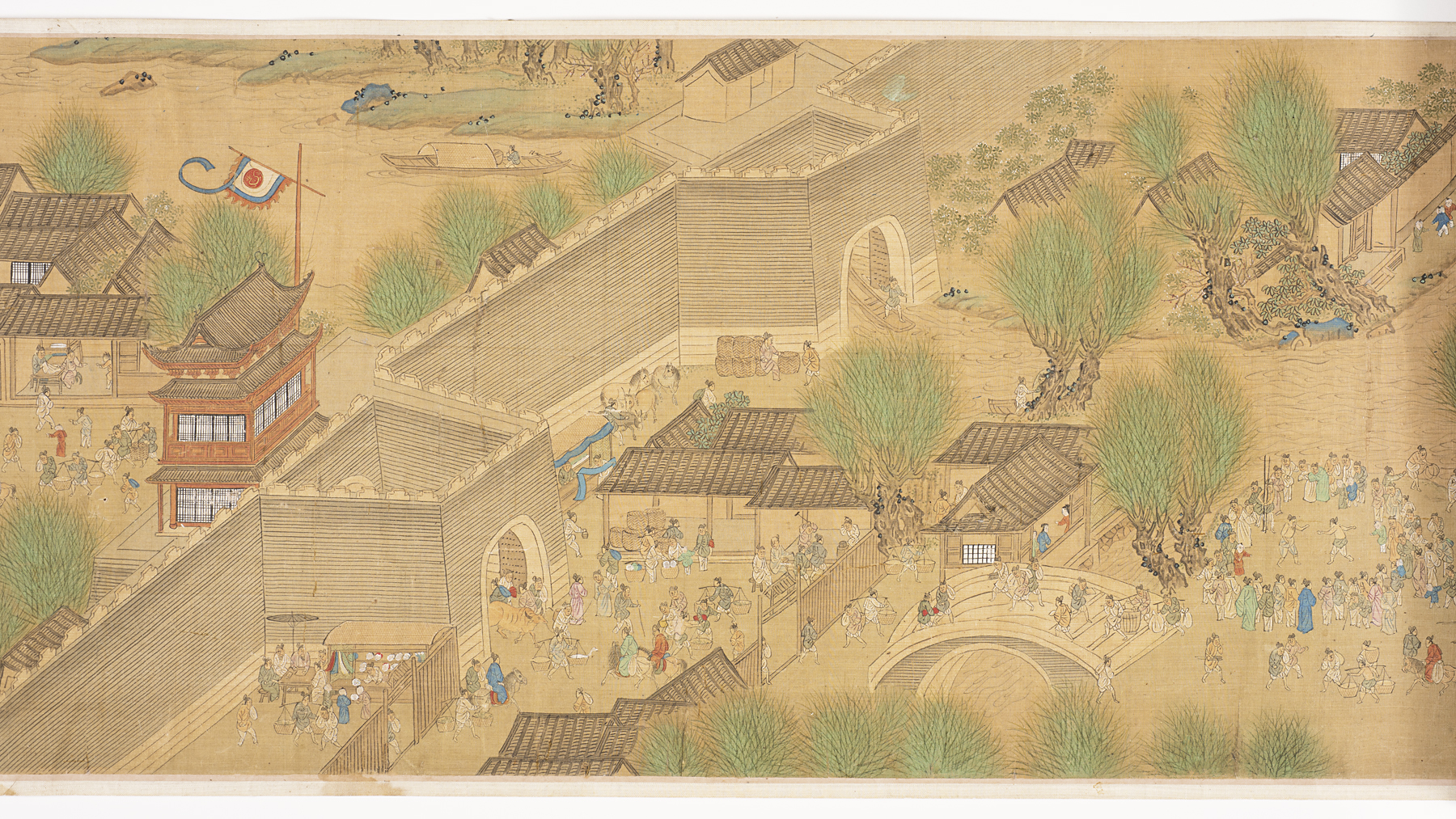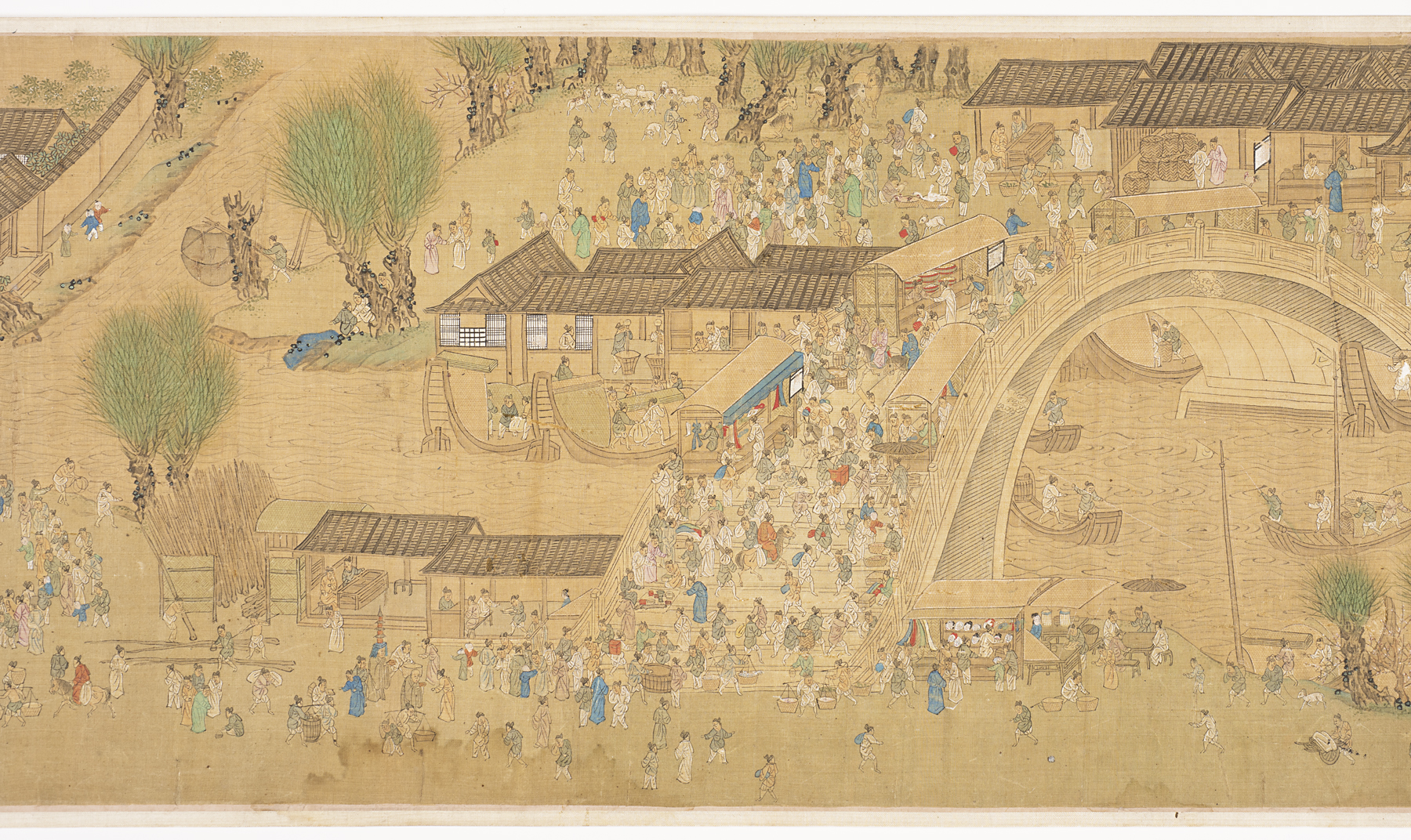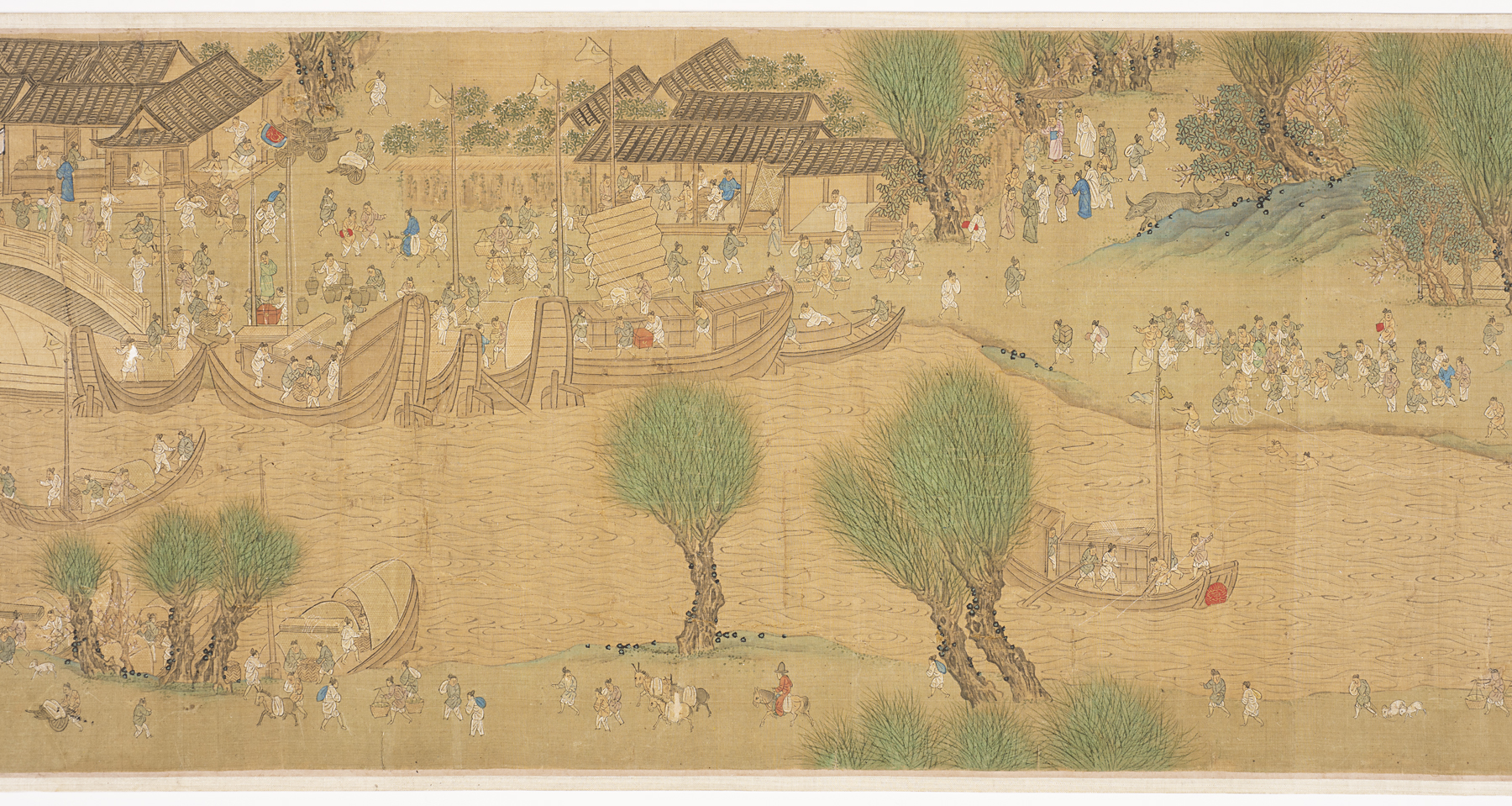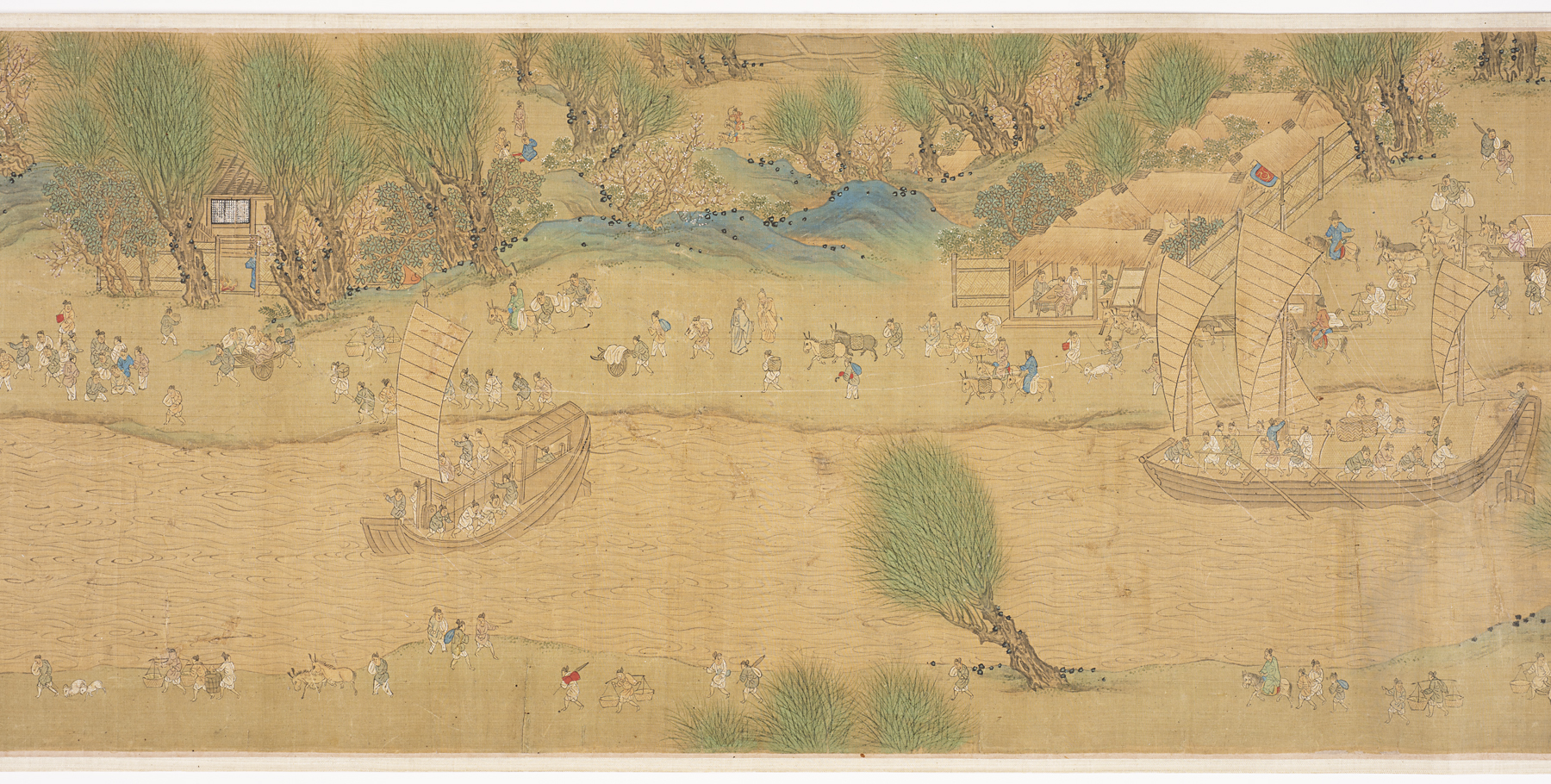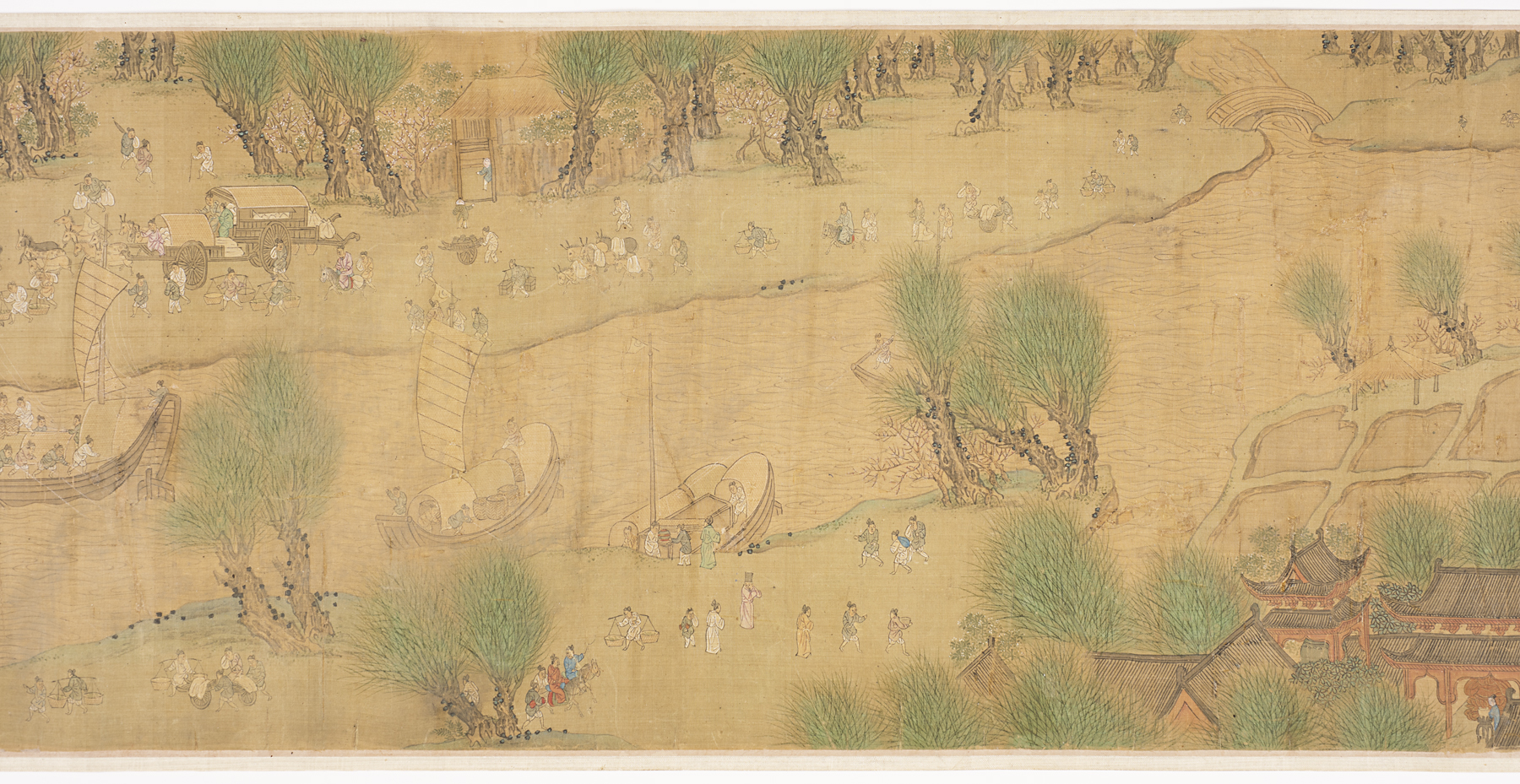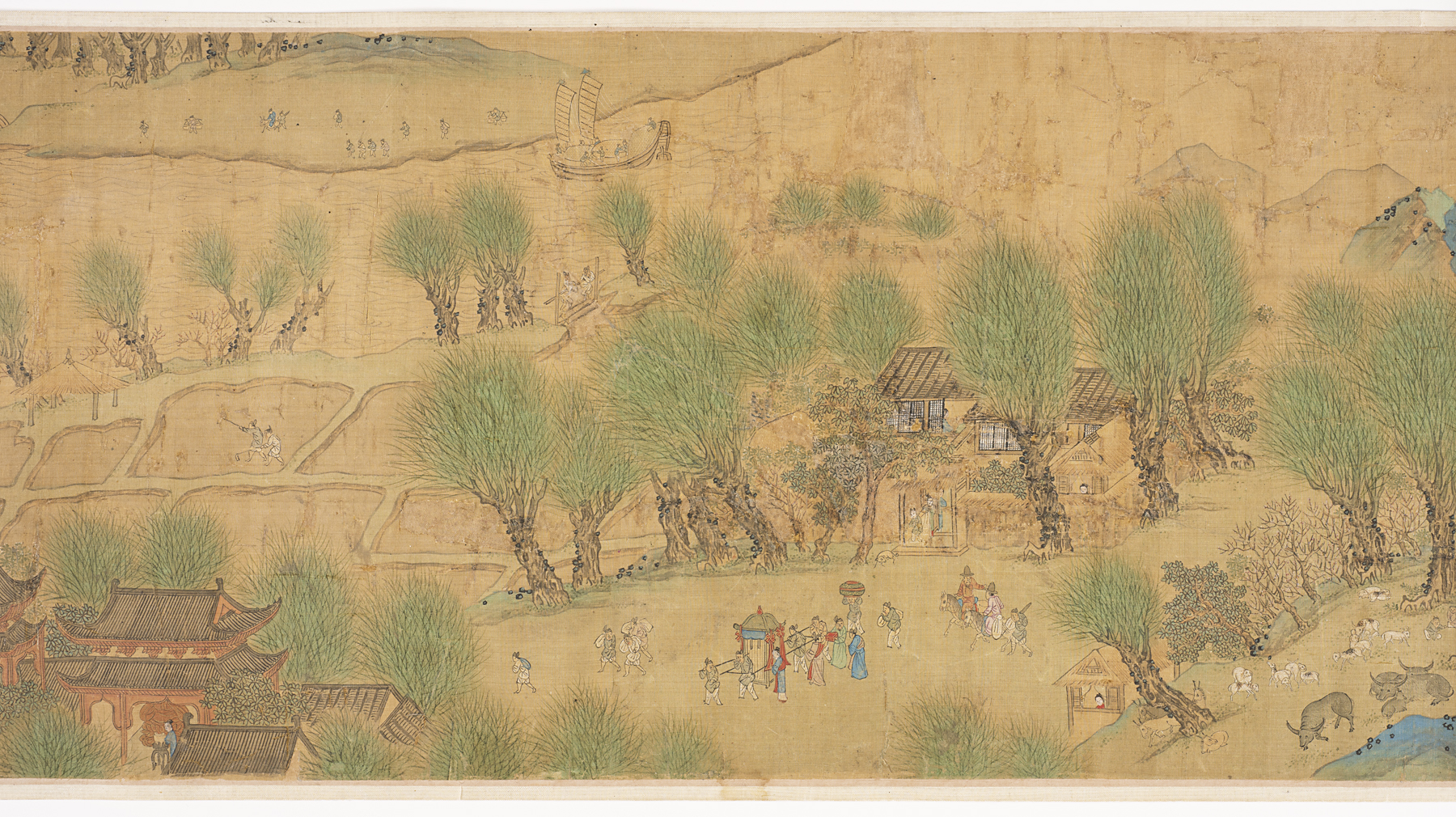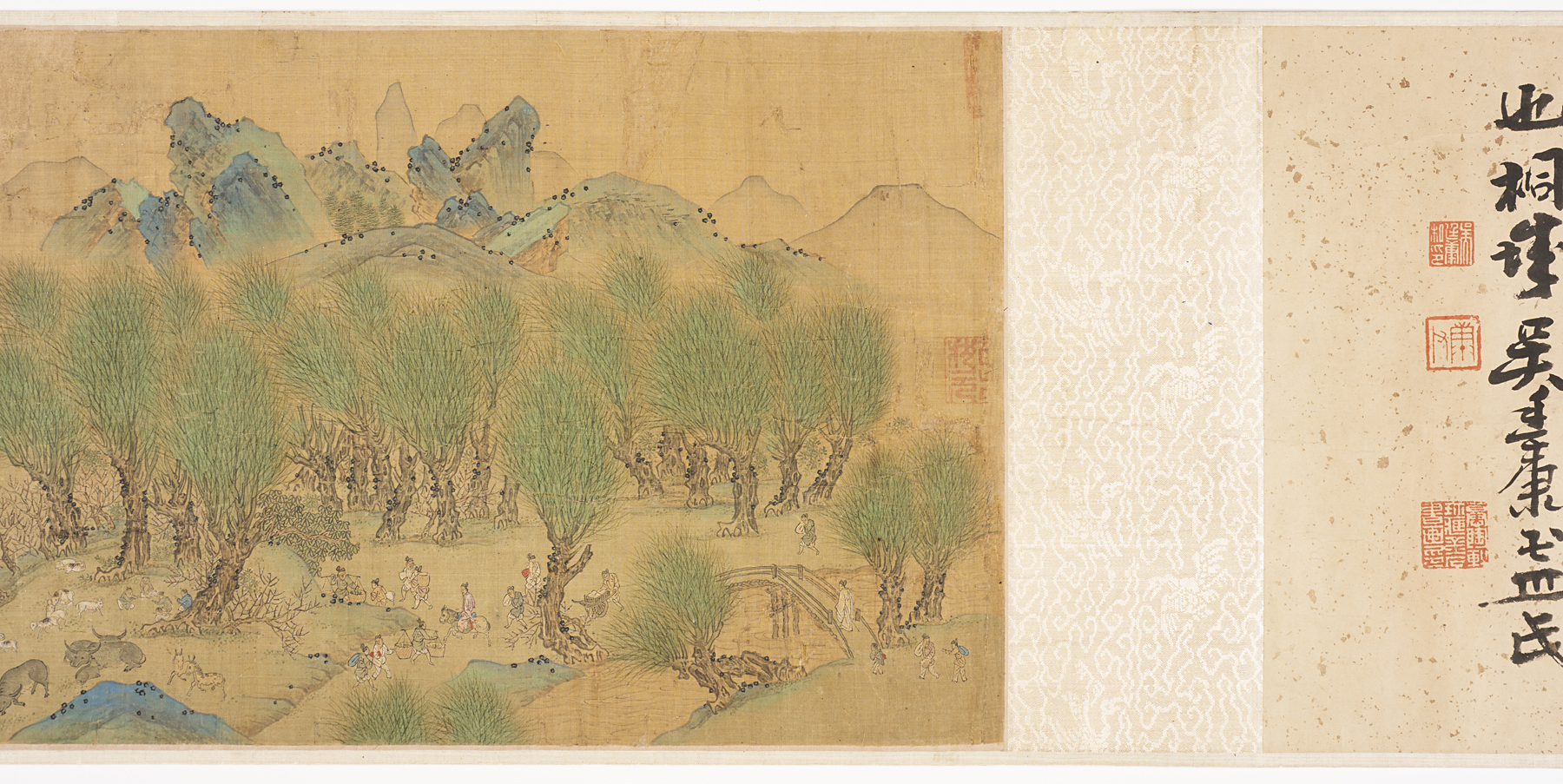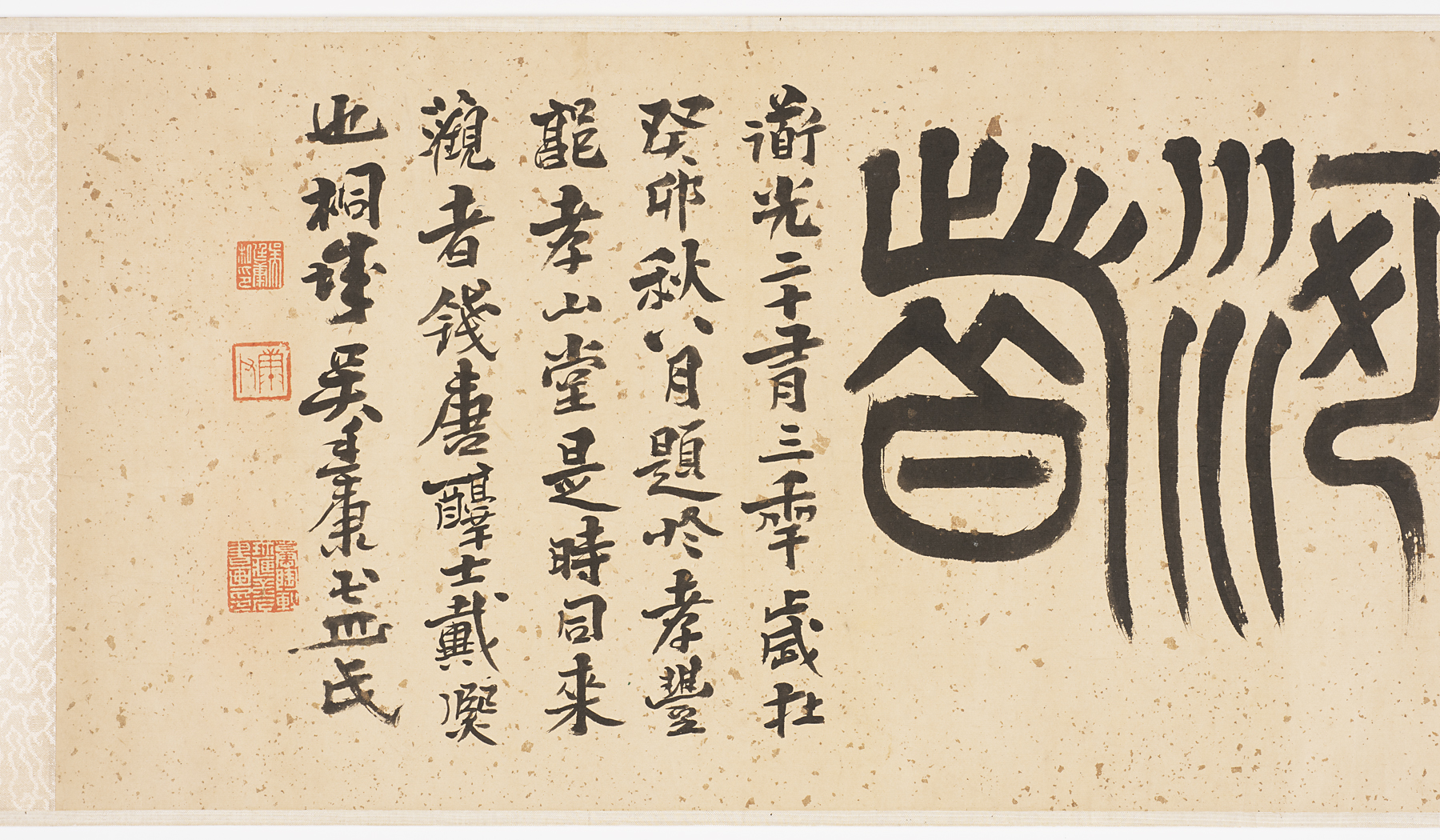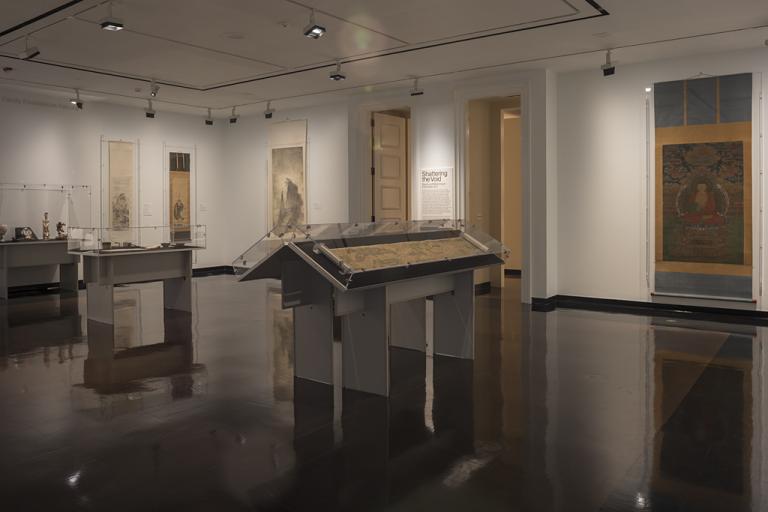Qingming Festival on the River, unknown maker from China
Artwork Overview
Qingming Festival on the River
, 1600s, Ming dynasty (1368–1644) or Qing dynasty (1644–1911)
Where object was made: China
Material/technique: ink; color; paper
Dimensions:
Image Dimensions Height/Width (Height x Width): 28.9 x 549 cm
Image Dimensions Height/Width (Height x Width): 11 3/8 x 216 1/8 in
Mount Dimensions (Height x Width x Depth): 30.2 x 1016 cm
Mount Dimensions (Height x Width x Depth): 11 7/8 x 400 in
Image Dimensions Height/Width (Height x Width): 28.9 x 549 cm
Image Dimensions Height/Width (Height x Width): 11 3/8 x 216 1/8 in
Mount Dimensions (Height x Width x Depth): 30.2 x 1016 cm
Mount Dimensions (Height x Width x Depth): 11 7/8 x 400 in
Credit line: Gift of Dr. and Mrs. George A. Colom
Accession number: 1986.0090
Not on display
If you wish to reproduce this image, please submit an image request


